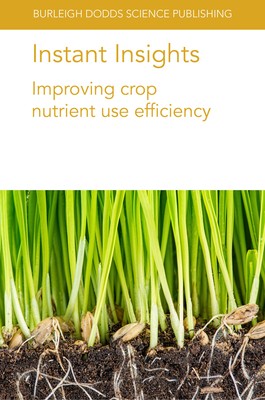
- We will send in 10–14 business days.
- Author: Ulrike Mathesius
- Publisher: Burleigh Dodds Science Publishing Ltd
- ISBN-10: 1801461112
- ISBN-13: 9781801461115
- Format: 15.2 x 22.9 x 0.6 cm, minkšti viršeliai
- Language: English
- SAVE -10% with code: EXTRA
Instant Insights: Improving Crop Nutrient Use Efficiency (e-book) (used book) | bookbook.eu
Reviews
Description
This specially curated collection features four reviews of current and key research on improving crop nutrient use efficiency.
The first chapter explores the relationship between rhizobacteria and plant roots, looking primarily at the recruitment of rhizobacteria by the plant to carry out particular functions, such as nutrient acquisition. The chapter highlights our current understanding of the molecular determinants of legume nodulation as well as challenges for improvements of biological nitrogen fixation in legumes and non-legumes. The second chapter considers the rising use of nitrogen (N) fertilizer in agriculture and its role in the shrinking contribution of soil organic N. The chapter explores the impact of the inefficient management of N (low nitrogen-use efficiency) and the consequent developments of major environmental issues, such as pollution to groundwater, oceans and the atmosphere. The third chapter addresses key issues in using N fertilizers in wheat production, such as product cost and environmental impact. The chapter summarises the development of N-efficient cultivars and their economic benefits, as well as their role in reducing the environmental impact of excessive N fertilizer inputs, whilst maintaining respectable yields. The final chapter considers the use of breeding techniques, including genetic variability, to develop more efficient wheat varieties with improved traits related to nitrogen capture, nitrogen assimilation and nitrogen remobilization.EXTRA 10 % discount with code: EXTRA
The promotion ends in 22d.05:43:49
The discount code is valid when purchasing from 10 €. Discounts do not stack.
- Author: Ulrike Mathesius
- Publisher: Burleigh Dodds Science Publishing Ltd
- ISBN-10: 1801461112
- ISBN-13: 9781801461115
- Format: 15.2 x 22.9 x 0.6 cm, minkšti viršeliai
- Language: English English
This specially curated collection features four reviews of current and key research on improving crop nutrient use efficiency.
The first chapter explores the relationship between rhizobacteria and plant roots, looking primarily at the recruitment of rhizobacteria by the plant to carry out particular functions, such as nutrient acquisition. The chapter highlights our current understanding of the molecular determinants of legume nodulation as well as challenges for improvements of biological nitrogen fixation in legumes and non-legumes. The second chapter considers the rising use of nitrogen (N) fertilizer in agriculture and its role in the shrinking contribution of soil organic N. The chapter explores the impact of the inefficient management of N (low nitrogen-use efficiency) and the consequent developments of major environmental issues, such as pollution to groundwater, oceans and the atmosphere. The third chapter addresses key issues in using N fertilizers in wheat production, such as product cost and environmental impact. The chapter summarises the development of N-efficient cultivars and their economic benefits, as well as their role in reducing the environmental impact of excessive N fertilizer inputs, whilst maintaining respectable yields. The final chapter considers the use of breeding techniques, including genetic variability, to develop more efficient wheat varieties with improved traits related to nitrogen capture, nitrogen assimilation and nitrogen remobilization.

Reviews